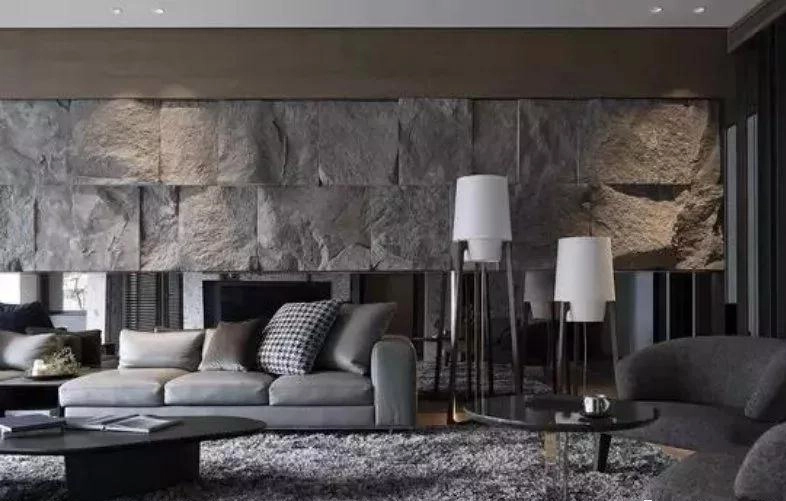Stone is a natural treasure. People use wisdom to turn it into a need. Natural stone is used to create various spaces and styles. Today, let's talk about the different surface treatments of stone.
As one of the two main materials applied indoors and outdoors, stone needs to be surface treated, which is very important. It not only brings beauty to the space but also meets the functional requirements of the characteristic space. If it is neglected, design problems may occur, including the following situations.
1. The flooring stone of the sauna room is not treated with cut groove or acid pickling finish, and the smooth stone is directly used, resulting in dangerous slipping;
2. The toilet flooring stone is not chamfered and sideline polished after groove cutting, resulting in toe cut when taking a bath;
3. The chiseled surface of wall decorative stone is susceptible to dirt accumulation and is not easy to clean.
Why do stones need to be surface treated?
The reasons why the natural stone will be surface treated and then presented in the indoor space, I think, have at least three aspects:
1. Meeting the safety requirement of the stone itself: Since the stone is a natural material, if it is not surface treated, it is vulnerable to alkali restoration, yellowing or even weathering due to chemical reaction after leaving the factory.
2. Meeting the functional requirement: different spaces, different design techniques, need different properties of the stone to meet its functionality. For example, in the application of exterior wall stone, the surface treatment methods such as chiseled finish or bush-hammered finish are used to demonstrate the decorous feeling and strength of the natural stone.
3. Meeting the aesthetic requirement: It is self-evident that any decorative materials are decorative in the space. Meanwhile, different stone surface treatment methods can also meet different design concepts. For instance, if you want to achieve the magnificent effect, high polished stone is preferred.
Back to the topic of stone surface treatment, I think that in addition to the natural texture and fine texture, the rich surface treatment form and super plasticity of stone are the essential differences between natural stone and related substitute materials. So, what is the surface treatment of stone:
"When the stone itself is guaranteed to be safe, the surface is treated differently to give it a different material style to meet various design needs."
This is called stone surface treatment. Any natural stone can be surface treated, but depending on the type of stone and the pattern, the suitable surface treatment form is different. The appropriate surface treatment form should be selected according to the softness and hardness of the stone.

As one of the two main materials applied indoors and outdoors, stone needs to be surface treated, which is very important. It not only brings beauty to the space but also meets the functional requirements of the characteristic space. If it is neglected, design problems may occur, including the following situations.
1. The flooring stone of the sauna room is not treated with cut groove or acid pickling finish, and the smooth stone is directly used, resulting in dangerous slipping;
2. The toilet flooring stone is not chamfered and sideline polished after groove cutting, resulting in toe cut when taking a bath;
3. The chiseled surface of wall decorative stone is susceptible to dirt accumulation and is not easy to clean.
Why do stones need to be surface treated?
The reasons why the natural stone will be surface treated and then presented in the indoor space, I think, have at least three aspects:
1. Meeting the safety requirement of the stone itself: Since the stone is a natural material, if it is not surface treated, it is vulnerable to alkali restoration, yellowing or even weathering due to chemical reaction after leaving the factory.
2. Meeting the functional requirement: different spaces, different design techniques, need different properties of the stone to meet its functionality. For example, in the application of exterior wall stone, the surface treatment methods such as chiseled finish or bush-hammered finish are used to demonstrate the decorous feeling and strength of the natural stone.
3. Meeting the aesthetic requirement: It is self-evident that any decorative materials are decorative in the space. Meanwhile, different stone surface treatment methods can also meet different design concepts. For instance, if you want to achieve the magnificent effect, high polished stone is preferred.
Back to the topic of stone surface treatment, I think that in addition to the natural texture and fine texture, the rich surface treatment form and super plasticity of stone are the essential differences between natural stone and related substitute materials. So, what is the surface treatment of stone:
"When the stone itself is guaranteed to be safe, the surface is treated differently to give it a different material style to meet various design needs."
This is called stone surface treatment. Any natural stone can be surface treated, but depending on the type of stone and the pattern, the suitable surface treatment form is different. The appropriate surface treatment form should be selected according to the softness and hardness of the stone.

Next: How to deal with the darkening of quartz stone countertop surface?
Previous: The 19th China (Nan'an) Shuitou International Stone Expo 2018

